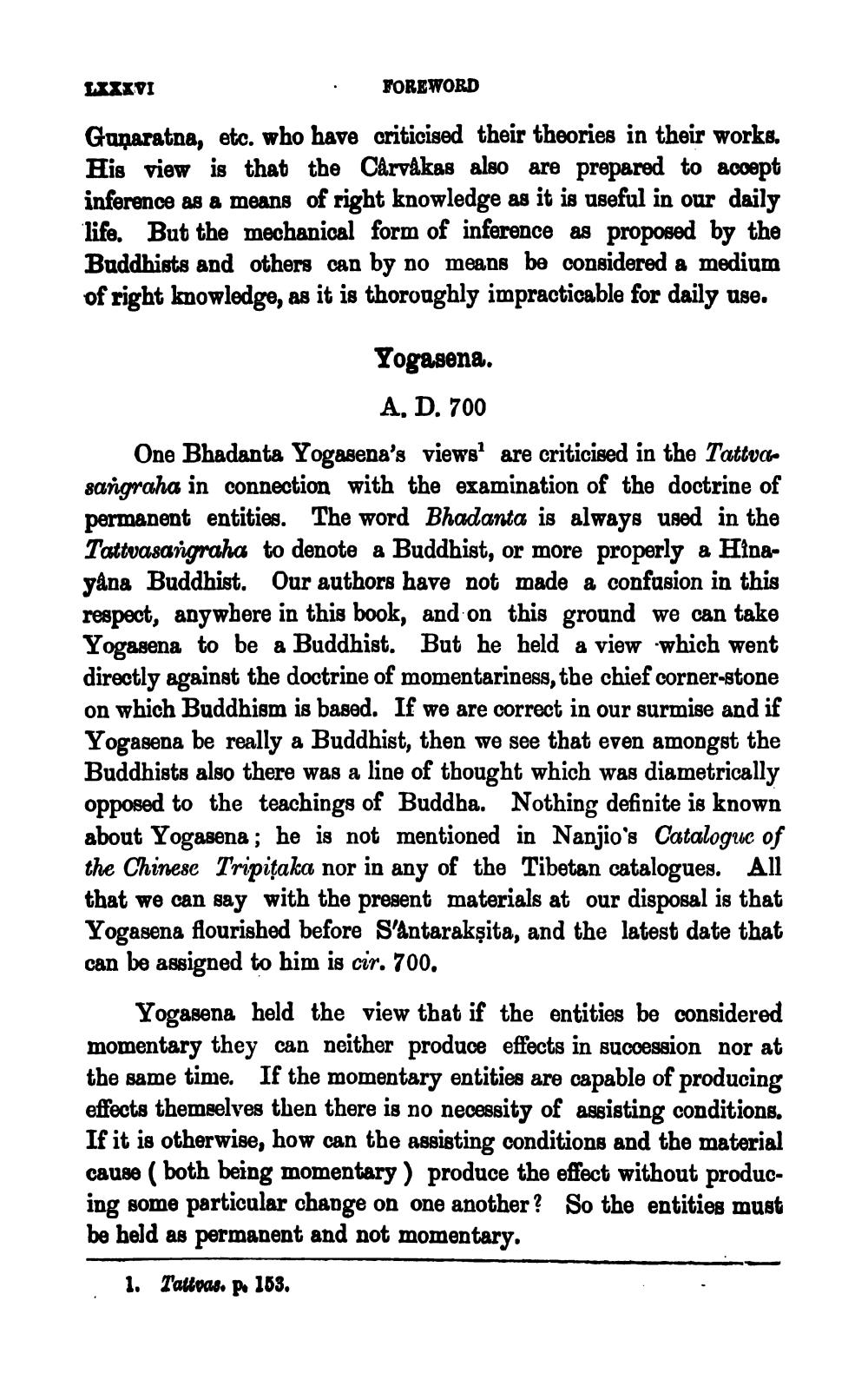________________
XXXVI
FOREWORD
Gañaratna, etc. who have criticised their theories in their works. His view is that the Carvakas also are prepared to scoopt inference as a means of right knowledge as it is useful in our daily life. But the mechanical form of inference as proposed by the Buddhists and others can by no means be considered a medium of right knowledge, as it is thoroughly impracticable for daily use.
Yogasena.
A, D. 700 One Bhadanta Yogasena's views' are criticised in the Tattuale sangraha in connection with the examination of the doctrine of permanent entities. The word Bhadanta is always used in the Tattvasargraha to denote a Buddhist, or more properly a Hinayana Buddhist. Our authors have not made a confusion in this respect, anywhere in this book, and on this ground we can take Yogasena to be a Buddhist. But he held a view which went directly against the doctrine of momentariness, the chief corner-stone on which Buddhism is based. If we are correct in our surmise and if Yogasena be really a Buddhist, then we see that even amongst the Buddhists also there was a line of thought which was diametrically opposed to the teachings of Buddha. Nothing definite is known about Yogasena; he is not mentioned in Nanjio's Catalogue of the Chinese Tripitaka nor in any of the Tibetan catalogues. All that we can say with the present materials at our disposal is that Yogasena flourished before s'antarakṣita, and the latest date that can be assigned to him is cir. 700.
Yogasena held the view that if the entities be considered momentary they can neither produce effects in succession nor at the same time. If the momentary entities are capable of producing effects themselves then there is no necessity of assisting conditions. If it is otherwise, how can the assisting conditions and the material Cause ( both being momentary) produce the effect without producing some particular change on one another? So the entities must be held as permanent and not momentary.
1. Tattoas. p. 163.




